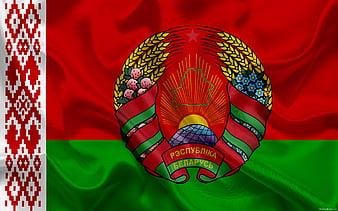Within the Belarus FC ecosystem, several clubs stand out for their achievements, popularity, and influence. Examining these key players provides insight into the competitive dynamics of Belarusian football and highlights the diverse strategies that have driven success.
BATE Borisov: The Belarus FC
Founded in 1973 and reestablished in 1996, BATE Borisov has emerged as the powerhouse of Belarusian football. Their meteoric rise to dominance is a remarkable case study in strategic vision and community support TK 88.
BATE’s success hinges on a robust youth academy, astute player recruitment, and consistent managerial leadership. They have clinched multiple league titles and earned spots in UEFA Champions League group stages, raising Belarus FC’s profile on the continental stage. Their style of play emphasizes technical proficiency and tactical discipline, traits honed through rigorous training programs.
Creatively, I admire how BATE blends local talent with selective foreign signings, creating a balanced squad capable of competing internationally. Their model illustrates the potential for sustainable growth even in smaller football markets. For Belarus FC fans, BATE represents both aspiration and pride.
Dinamo Minsk: Heritage and Legacy
As one of the oldest and most storied clubs in Belarus, Dinamo Minsk boasts a rich heritage dating back to 1927. They were regular competitors in the Soviet Top League and remain a symbol of Belarusian football tradition.
Post-independence, Dinamo continues to compete at high levels but faces stiff competition from emerging clubs. Their emphasis on technical play and fostering Belarusian talent persists, contributing to the national team’s development pipeline. Despite fluctuating fortunes, Dinamo retains a loyal fanbase deeply connected to the club’s historical significance.
Personally, Dinamo Minsk fascinates me as a living link between past and present. The club embodies continuity amid change, serving as a cultural touchstone within Belarus FC. Their legacy underscores the importance of heritage in shaping sporting identity.
Shakhtyor Soligorsk: Emerging Powerhouse
Shakhtyor Soligorsk, established in 1961, has increasingly challenged the traditional hierarchy of Belarusian football. Backed by industrial mining interests, they benefit from stable funding and a clear development strategy.
The club invests heavily in coaching, infrastructure, and scouting, resulting in competitive squads capable of contesting for league titles and cup honors. Their tactical approach often prioritizes physicality and pressing, contrasting with the technical styles favored by rivals like Dinamo Minsk.
What intrigues me about Shakhtyor is their methodical building process, which could serve as a blueprint for other Belarus FC organizations seeking sustainable growth. Their ascent enhances league competitiveness and diversifies the narrative beyond traditional giants.
Other Notable Clubs and Rising Stars
Beyond the marquee names, a constellation of smaller clubs enriches the Belarus FC landscape. Teams like FC Gomel, Neman Grodno, and Torpedo-BelAZ Zhodino offer unique stories rooted in their communities.
Many of these clubs invest in local youth development, acting as talent incubators while cultivating passionate regional support. Some occasionally disrupt the established order with surprise cup runs or league performances, adding unpredictability and excitement to domestic football.
From my vantage point, these clubs embody the heart of Belarus FC — a tapestry woven from diverse threads united by shared passion. Their perseverance ensures the vitality of Belarusian football, reminding us that every club, regardless of size, contributes to the sport’s enduring appeal.


